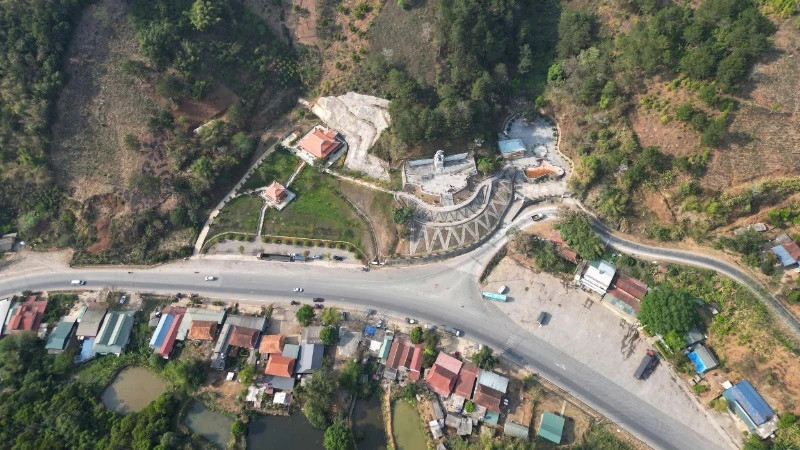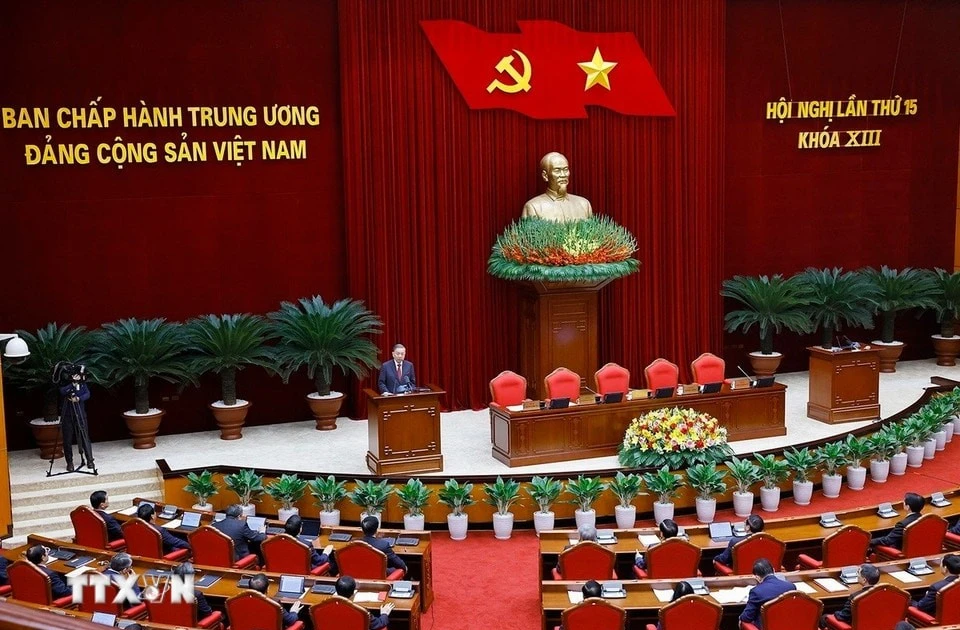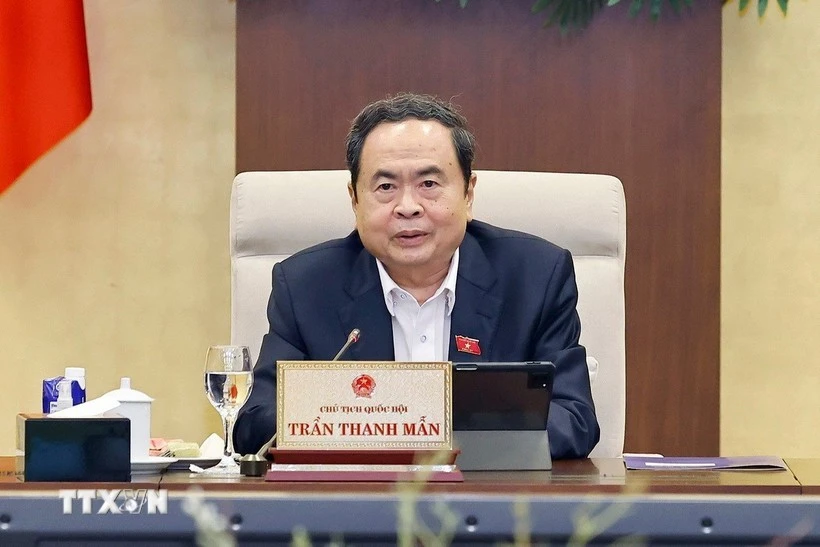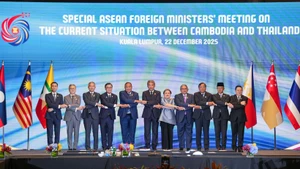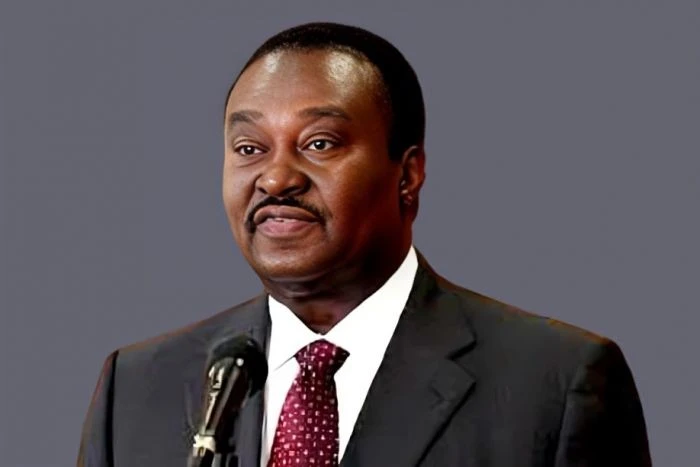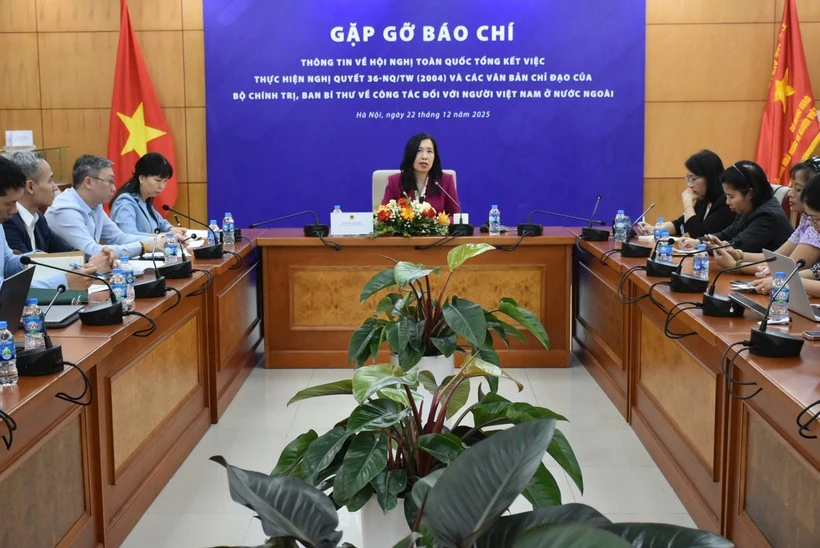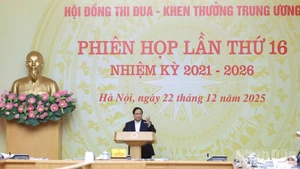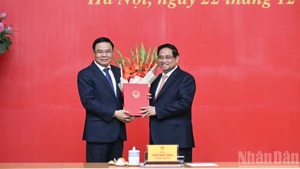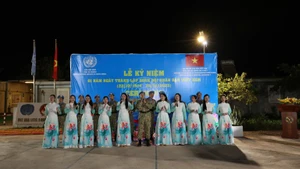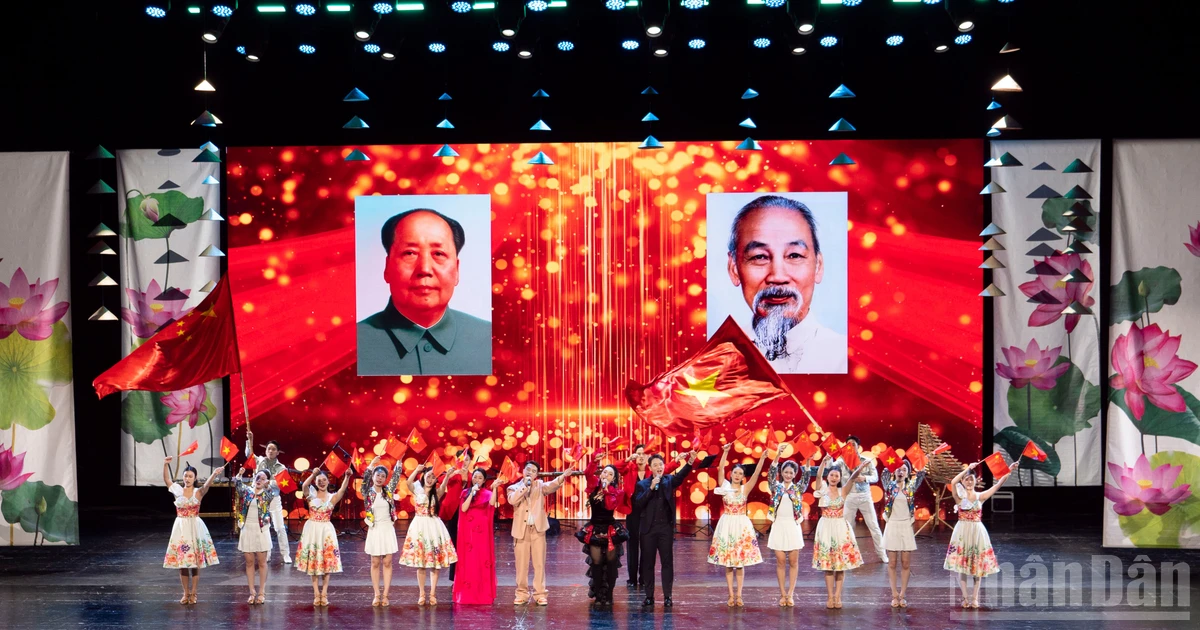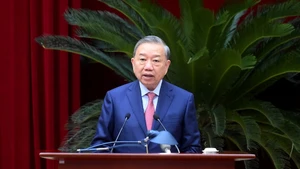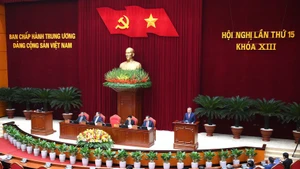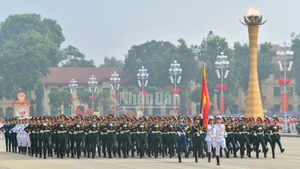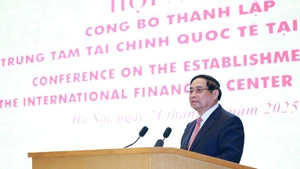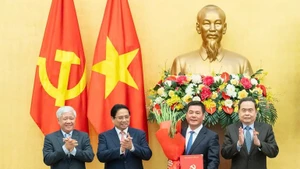During the 1953-1954 Winter-Spring campaign, with the shift in strategic combat areas between our army and the French army, Dien Bien Phu became a decisive, strategic point that determined victory or defeat in the war between Vietnam and the invading French colonialists.
On the Vietnamese side, in early December 1953, the determination of the Politburo and the Party Central Committee was to launch the Dien Bien Phu Campaign - the largest military campaign in the resistance war against the French colonialists in many aspects, both in terms of intensity and the scale of participating forces. Preparations for this decisive and strategic battle were urgently implemented.
At a time when the whole country had just experienced important activities to celebrate the 50th anniversary of the Liberation of the South, and many activities were taking place to celebrate the 71st anniversary of the Liberation of Dien Bien Phu, Dien Bien soldiers shared their thoughts about unforgettable memories. They were all resilient and brave, contributing to creating a victory that shook the world.
Veteran Nguyen Van Be, 96 years old, Xi Mang Village, Chieng Pac Commune, Thuan Chau District, Son La Province, is one of the living witnesses of the Dien Bien Phu Campaign, recalls: A very important issue for the Vietnamese army and people was the task of ensuring logistics for a large force fighting for a long time in the Dien Bien Phu mountainous battlefield, 500 km to 700 km away from the rear in the weather conditions, terrain, primitive and backward means of transport and extremely fierce war.
The Party Central Committee and President Ho Chi Minh encouraged the entire Party, the entire army and the entire people to overcome all difficulties and hardships, and make every effort to support the Dien Bien Phu frontline with human and material resources. The Party Central Committee determined that the entire people, the entire Party and the Government would use all their strength to support the Dien Bien Phu Campaign and do everything necessary to achieve total victory.
On that day, on all the roads to the battlefield, Co Noi Junction, Mai Son District, Son La Province, became the most fiercely attacked and targeted point of the French Air Force. All activities of supporting forces, transporting weapons, food, and provisions of the Vietnamese army and people from Yen Bai, from the Northern Delta to the Dien Bien Phu battlefield, had to pass through Co Noi Junction.
During the Dien Bien Phu Campaign, Co Noi Junction became a key point in a key area of Son La Province, the gateway to the Northwest of our army and people, the vital route connecting Viet Bac Inter-zone, Inter-zone 3, and Inter-zone 4 with the Dien Bien Phu battlefield.
At the same time, this place also became one of the key points of fierce attacks by the French air force, aiming to block and cut off the transportation route, the lifeblood of the Dien Bien Phu battlefield, crushing the will and determination to resist of the Vietnamese army and people.
For these reasons, Co Noi Junction is considered one of the first, fierce and harsh challenges for the Vietnamese army and people before and during the Dien Bien Phu Campaign, one of the places where immortal revolutionary heroism, indomitable fighting spirit, and solidarity fought for the independence and freedom of the entire nation shined.
With the intention of “teaching Vietnam a lesson”, ready to “crush” the main force of Vietnam if they dared to attack Dien Bien Phu, the French expeditionary army command was determined to build and turn Dien Bien Phu into the strongest stronghold group in Indochina up to that time.
From those intentions, the French colonialists did not hesitate to use any plot or trick to win the war. From the beginning to the end of the Dien Bien Phu Campaign, the fierceness of the war did not stop at the scope of confrontation between the two combat forces, but on each route to the battle, at each key intersection to maintain the survival of the Dien Bien Phu battlefield, it also became extremely fierce, encountering many losses and sacrifices.
Veteran Le Cong Binh, born on January 15, 1930, Sub-region 32, Co Noi Commune, Mai Son District, Son La Province, despite his weak legs and dim eyes, was still excited when recalling: The French colonial army did not hesitate to plot and use any brutal means of destruction. They used bombers day and night to drop bombs on roads and key traffic intersections to stop our army's advance on the Dien Bien Phu battlefield; to block, cut off, and destroy the supply lines of food, provisions, weapons, and ammunition from the Northern Delta rear to the Dien Bien Phu battlefield.
They concentrated a large amount of artillery to surround, blockade, and separate the main Vietnamese troops from the rear, destroy revolutionary bases, and completely paralyse the vital routes to Dien Bien Phu, to crush the fighting spirit of our army and people. But with the spirit of national solidarity, the army and people still held out under the “fire coordinates” of Co Noi intersection, to contribute to the Dien Bien Phu battlefield.
During those heroic years, with the spirit of the whole country boiling to support the Dien Bien Phu battlefield to fight and defeat the enemy, the Vietnam Youth Volunteers General Team assigned the task to the youth volunteer force to directly stay there day and night, serving the route from Yen Bai to Co Noi intersection to Dien Bien Phu.
The youth volunteer force closely coordinated with other forces to clear bombs and mines, camouflage, guide the way, transport the wounded, build camps, warehouses, transport weapons, equipment, food and provisions, ensuring that the traffic arteries were always open, providing adequate and timely supplies to the Dien Bien Phu front.
Former youth volunteer Vu Thi Thai, group 3, Chieng Le ward, Son La City, now 88 years old, recalls: During the Dien Bien Phu Campaign, the roads leading to Co Noi intersection were deformed and jagged by French air force bomb craters. Even the surrounding hills and mountains were only red soil. The frontline labourers, engineers, and youth volunteers continuously levelled the ground and repaired the roads for vehicles to pass. The work of the youth volunteers, labourers, and engineers was always interrupted because French air force planes came to bomb and drop flares.
Co Noi intersection stands tall like a difficult pass that all those who went to battle had to overcome. People followed each other to the front, the atmosphere was still full of enthusiasm. Labourer groups from Viet Bac, Tay Bac, Zone 3, and Zone 4 all met at Co Noi intersection. Infantry, artillery, engineers, transport and cultural workers, one unit followed another. Soldiers wearing new long-sleeved cotton shirts, guns, ammunition, backpacks, and rice bags filled their bodies, walked in single file, one after another, quickly walking to the Dien Bien Phu front line.
During the Dien Bien Phu Campaign, traffic at the Co Noi intersection was never interrupted, even during the fiercest attacks by the French Air Force. Henri Navarre, Commander-in-Chief of the French Expeditionary Force, had to admit, “The French Air Force tried to block the enemy’s main transport route by attacking traffic and convoys. But it was ineffective. Wherever they destroyed it, they repaired it immediately, and there was rarely a point of destruction that could disrupt their traffic for more than 24 hours. Moreover, while repairing it, they continued to transport by building barriers or bypassing it”.
The indomitable fighting spirit of the fighting forces, the traffic security at Co Noi intersection and the Vietnamese army and people in the resistance war against the French colonialists have forever entered the history of the nation's resistance against foreign invaders.
Co Noi intersection has now become one of the famous historical sites, where the immortal heroic epic of the Vietnamese people in the 20th century was written, of the resilient and loyal Northwest land and the indomitable Son La. The fighting and serving of the forces at Co Noi intersection for more than 50 days and nights in the past was not only a battle of wits and strength between a group of volunteer youths and the French army, but also a battle of wits and a fierce challenge for the entire Vietnamese people in the long and great war of national defence.
This victory also left us with many valuable lessons and experiences in building and training the fighting spirit, maintaining the revolutionary offensive ideology; promoting the sense of self-reliance and self-strengthening; being resilient, brave, resourceful, and creative; in the spirit of national solidarity and always knowing how to promote and closely combine the strength of national solidarity with the strength of the times to create the combined strength of the entire people, comprehensively ensuring the resistance cause to achieve complete victory.
